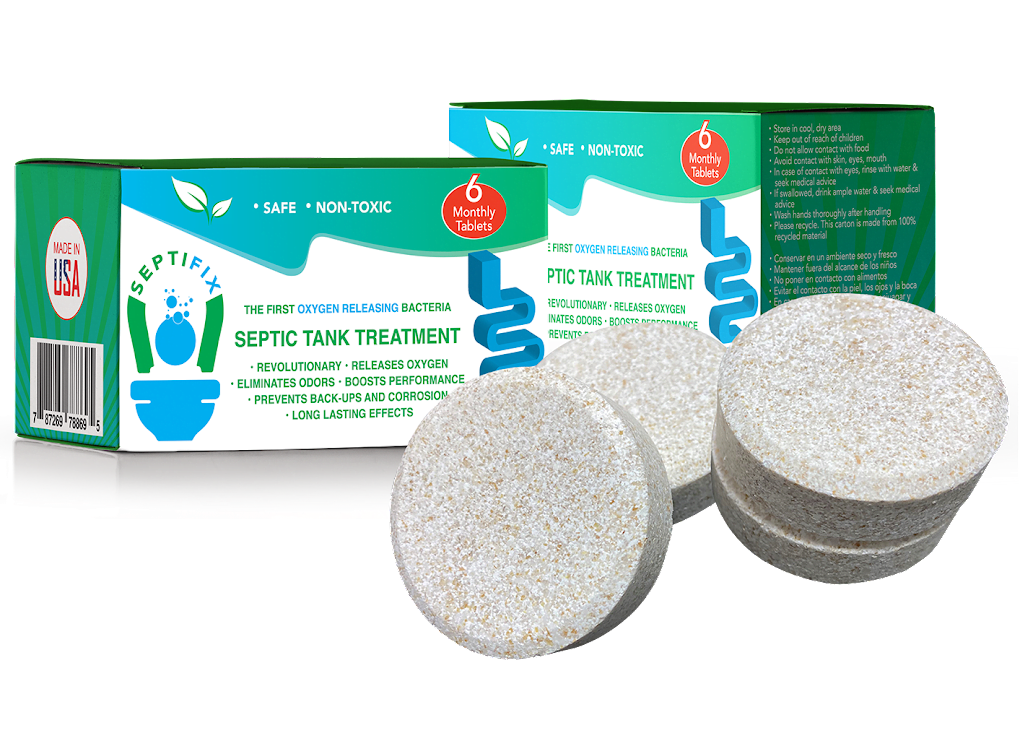A septic tank system, often seen as an essential alternative in locations devoid of centralized sewer systems, operates as an onsite wastewater treatment facility. This ingenious system meticulously processes and neutralizes household waste (effluent), ensuring that homes in more isolated or rural areas can manage their waste efficiently and safely. Particularly prevalent in regions where connecting to municipal sewer lines is not feasible or economical, septic tank systems provide a combination of simplicity and effectiveness. This detailed overview delves into the intricacies, components, and significance of these standalone wastewater solutions.
The Historical Context:
Before diving into the mechanics, it’s worth noting the historical significance of septic systems. For centuries, humans have grappled with waste disposal, especially in areas where traditional sewer systems were absent or impractical. The invention of the septic system presented an elegant solution, allowing for effective waste management that protected both the environment and public health.
Why Septic Over Sewer?
While centralized municipal sewage treatment plants undoubtedly offer advantages, they aren’t always the best solution. Installing and maintaining extensive sewer lines can be costly and challenging, especially in terrains that are hilly, rocky, or heavily wooded. Moreover, for sparsely populated areas, the per-household cost of such infrastructural development can be prohibitive. Enter the septic system – a localized, cost-effective, and efficient waste treatment option that sidesteps the need for expansive sewer networks.
Environmental Considerations:
Beyond the economic and logistical advantages, septic systems also have environmental benefits. When maintained correctly, they reintroduce treated wastewater into the local ecosystem in a way that’s safe, thereby replenishing groundwater supplies. Conversely, improperly managed or malfunctioning systems can have detrimental environmental impacts, underscoring the importance of regular upkeep and monitoring.

SEPTIFIX will save you hundreds, if not thousands of dollars each year, because your septic system will run smoothly and you won’t have to worry about calling the pumpers or a plumber for a fix!
Click here to save up to 50%
In the subsequent sections, we will further break down the components and operations of septic tank systems, offering a comprehensive understanding of their role in modern waste management.
Components of a Septic Tank System
1. Septic Tank
- Material: Septic tanks can be constructed from various materials, including concrete, fiberglass, and polyethylene. The material determines the tank’s durability, with concrete being the most common due to its long lifespan.
- Compartments: Modern septic tanks are often divided into two compartments, helping to further separate solids from liquids and improve the breakdown of organic matter.
- Baffles: These are internal barriers that prevent floating scum at the top and settled sludge at the bottom from exiting the tank. They guide the middle layer of liquid effluent towards the outlet.
- Tees: These are T-shaped pipes on the inlet and outlet to ensure smooth flow of wastewater into and out of the tank and to prevent the scum layer from flowing into the drain field.
2. Drain Field (or Leach Field)
- Trenches: The drain field typically consists of several trenches that distribute the wastewater into the soil. The trenches are filled with gravel or stone, and the effluent is distributed through perforated pipes laid within these trenches.
- Distribution Box: Before wastewater enters the trenches, it often flows through a distribution box, evenly distributing it into each trench and ensuring even use of the drain field.
- Soil: The soil beneath and around the drain field is a natural filter. Harmful pathogens and chemicals are neutralized as wastewater percolates down through the soil. The soil type plays a crucial role in this process; for instance, sandy soils may allow for quicker drainage, while clay soils might retain moisture longer.
3. Pipes and Fittings
- Inlet and Outlet Pipes: The inlet pipe carries wastewater from the home to the septic tank, while the outlet pipe transports effluent from the tank to the drain field.
- Perforated pipes are used in the drain field, allowing liquid effluent to seep into the surrounding gravel and soil.
4. Venting
- Vents: Proper ventilation is crucial for a septic system. Vents allow gases produced during the waste breakdown process to safely escape. This is often done through the home’s existing plumbing vents.
5. Optional Components
- Effluent Filters: These are sometimes installed at the septic tank outlet to prevent larger solids from entering the drain field, which can lead to clogs.
- Pump System: A pump system might be installed in properties where gravity doesn’t allow for efficient wastewater movement from the tank to the drain field.
- Septic Tank Risers: These are vertical pipes connected to the tank’s opening, making it easier to access the tank for inspections and pumping without digging.
- Septic Tank Alarms notify homeowners when the effluent level in the tank or pump chamber rises above its recommended level, indicating potential problems.
Each septic system component plays a crucial role in its operation and efficiency. Understanding these components helps homeowners maintain their systems effectively, ensuring longevity and reducing potential environmental impacts. Proper design, installation, and maintenance are vital to ensure the system works as intended.
How does a septic tank system work?
1. Wastewater Generation:
- Source: Every time water goes down a drain in a home—from flushing a toilet, taking a shower, washing dishes, or doing laundry—that wastewater needs to be treated. This is the starting point of the septic system’s job.
2. Initial Journey to the Septic Tank:
- Flow: All household wastewater converges into one main drain pipe which directs it to the septic tank.
3. Separation in the Septic Tank:
- Settling Process: Once inside the septic tank, the wastewater separates by the force of gravity. The heaviest particles sink to the bottom, forming a layer known as ‘sludge’. Lighter particles like fats, oils, and grease rise to the top, forming a layer called ‘scum’. The relatively clear water in the middle is termed ‘affluent.’
- Anaerobic Digestion: The septic tank environment is anaerobic (without oxygen). In this environment, specific bacteria break down organic matter in the wastewater. While they help reduce the volume of sludge and scum, they don’t eliminate it. Over time, this undigested material accumulates, which is why periodic tank pumping is necessary.
4. Transition to the Drain Field:
- Effluent Transfer: The liquid effluent in the septic tank, which occupies the space between the scum and sludge, moves out of the tank and into the drain or leach field. This transition is facilitated either by gravity or pumps, depending on the property’s topography.
- Effluent Filtering: Before reaching the drain field, effluent may pass through filters designed to prevent larger solids from potentially clogging the leach lines.
5. Final Treatment in the Drain Field:
- Distribution: As the effluent enters the drain field, it’s distributed into a network of perforated pipes. These pipes allow the wastewater to trickle down into gravel-filled trenches.
- Soil Treatment: The real magic happens in the soil. As the effluent percolates through the soil layers, it undergoes natural filtration. Soil particles attract and hold onto potentially harmful pathogens; soil bacteria further break down contaminants. When the effluent reaches deeper groundwater levels, it’s typically free of harmful pathogens, making it safe to join natural water reserves.
6. Venting of Gases:
- Gas Generation: Waste breakdown, both in the septic tank and in the soil, produces gases. These need to be vented to prevent pressure buildup and remove foul odors.
- Escape Route: Gases generated in the septic system typically escape through vents on the home’s roof, ensuring that unpleasant smells do not seep into the living areas.
The septic system’s function is a symphony of physics, biology, and engineering. When operating correctly, it offers an efficient and environmentally friendly way to handle household wastewater. Understanding this process underscores the importance of proper system care, such as routine inspections and pumping, to ensure the system’s delicate balance remains intact.
Maintenance and Considerations for Septic Systems
1. Regular Inspections:
- Frequency: At a minimum, homeowners should have their septic system inspected by a professional every three years. Systems with electrical float switches, pumps, or mechanical components might require more frequent checks, typically once a year.
- Purpose: Regular inspections can help detect problems early before they become severe (and expensive) and determine when the septic tank needs pumping.
2. Pumping the Septic Tank:
- Necessity: Over time, the sludge layer at the bottom of the tank accumulates. If this layer becomes too thick, solids could escape into the drain field, potentially leading to clogs.
- Frequency: The frequency of pumping varies depending on tank size, the number of residents, and the amount of wastewater generated. On average, households should anticipate pumping every 3-5 years.
3. Efficient Water Use:
- Volume Impact: The more water a household uses, the more water enters the septic system. Using water efficiently improves the system’s operation and reduces the risk of malfunction.
- Appliances: Upgrading to high-efficiency toilets, washing machines, and dishwashers can significantly reduce the volume of water entering the septic system.
- Fix Leaks: Leaky faucets and toilets can introduce unnecessary water into the system. Check for and repair leaks regularly.
4. Be Mindful of What Goes Down the Drain:
- Harmful Chemicals: Certain chemicals can kill the beneficial bacteria in the septic tank or contaminate groundwater. Avoid pouring bleach, paints, solvents, and oils down the drain.
- Non-Biodegradables: Items like feminine hygiene products, diapers, cigarette butts, coffee grounds, and cat litter should not be flushed or drained. They can clog the system and increase the need for tank pumping.
- Kitchen Waste: Limit the amount of fats, oils, and grease that go down the drain, as they can solidify and clog the system.
5. Protect the Drain Field:
- Planting: Plant only grass above and near the drain field. Trees and shrubs can have invasive roots that interfere with the system.
- Surface Water: Ensure runoff water from roofs and paved surfaces diverts from the drain field. Excess water can slow down the treatment process.
- No Heavy Objects: Never park or drive vehicles on the drain field. The pressure can damage the pipes below.
6. Use Additives with Caution:
- Claims: While some products claim to help septic systems operate better, there’s limited evidence to suggest these additives are beneficial. In some cases, they might even be harmful.
- Regulations: Some regions have banned or discouraged septic system additives. Checking local regulations and seeking expert advice is always a good idea.
Maintaining a septic tank system isn’t overly complex but requires consistent attention and care. Through regular inspections, mindful usage, and an understanding of the system’s intricacies, homeowners can ensure their septic system remains operational for many years, protecting both their investment and the environment.


